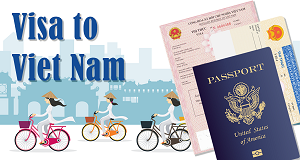Ha Noi
Capital of Vietnam
Area: Over 913 square km
Population: 3.3 million (1.3 million in the inner part and 2 million in the suburbs of the city)
History
For many centuries B.C, the Hanoi area was made by the Hung Kings the capital. At present, vestiges of the Co Loa citadel are found. This is the ancient capital's fortification of King An Duong Vuong, built in the third century B.C. In the 10th century, Vietnam gained independence after over 1000 years under the rule of the northern aggressors. In 1010, King Le Thai To moved the then capital from the inaccessible Hoa Lu area to the Dai La Citadel (present day Hanoi) as the latter was more convenient for production and trade. The King named the new capital "Thang Long", meaning "the soaring dragon" which, according to legend, was seen flying up from the citadel by the King and considered by himself as a good omen of prosperity. Nowadays, one may see in Hanoi architectural projects built in that time such as One-Pillar pagoda, Tran Vu temple, ancient university of Quoc Tu Giam-Van Mieu.
By the end of the 14th century, the Le dynasty weakened. Ho Quy Ly usurped the throne and moved the capital to Thanh Hoa, called "Tay Do" (the capital in the West). The old capital Thang Long was called the Dong Do citadel (the citadel in the East).
At the beginning of the 15th century, the national hero Le Loi defeated foreign aggressors and gave Thang Long Back the capital status with the new name of "Dong Kinh". Later, Western traders coming to Vietnam pronounced Dong Kinh as Tonkin or Tonquin which meant the whole North of Vietnam.
The remembrance of Le Loi's victory is connected with Hoan Kiem lake (Restored Sword) located in the centre of Hanoi. Legend has it that after the victory, Le Loi traveled by boat on the lake. A golden tortoise emerged from water surface and claimed back sword believed to have been given by God to Le Loi to resist the enemy.
At the beginning of the 16th century under the Mac Dynasty Dong Kinh regained the Thang Long name.
At the beginning of the 19th century, the Nguyen Dynasty moved the capital to Hue. Thang Long remained the capital of the Northern provinces.
In 1831, the Minh Mang King of the Nguyen Dynasty established Hanoi Province including Thang Long and some surrounding districts. The word Hanoi means "the land between rivers".
At the end of the 19 century Hanoi was occupied by the French and it became a colonial city for over half a century.
In August, 1945, Vietnam regained independence. On September 2, 1945 a mass meeting was held at Ba Dinh square. President Ho Chi Minh read the Declaration of Independence promulgating the foundation of the Democratic Republic of Vietnam. Ha Noi was made the capital of independent Vietnam.
In 1946, Hanoi was once again occupied by the French. At the end of 1954, the French army was defeated and withdrew from Vietnam but the country was divided into two parts. Hanoi was the capital of the North. Many industrial zones, factories, schools, enterprises, hospitals and theatres were built, making Hanoi a political, economic and cultural centre of the North.
In 1965, Hanoi was seriously damaged by American bombardments.
On April 30, 1975 Vietnam was fully liberated. In 1976 the newly elected National Assembly recognized Hanoi as the capital of the independent and reunited country of Vietnam. Since then, Hanoi has quickly developed into a political, economic and cultural centre of the whole country.
Administrative Zones
Present day Hanoi comprises 7 inner districts and 5 suburban districts. Nevertheless, districts may be increased in number as the capital is developing fast together with the country. The 7 inner districts of Hanoi are:
- Hoan Kiem district: This is a trade, cultural and administrative centre. The Municipal People's Committee, the Central Bank and important state offices are located in this district. It also includes theatres, railway stations, markets and busy commercial streets. Two bridges link Hoan Kiem district with the other side of the Red River.
Hoan Kiem Lake in the centre of the district is considered the heart of the capital. Its ancient streets still keep deep imprints of Hanoi's millenary history, therefore they should be protected as historical relics.
- Ba Dinh district: Ba Dinh district is located South of West Lake, a zone where many highest state bodies and diplomatic offices are situated. The Mausoleum and Museum of Ho Chi Minh and the Hanoi old citadel are also located in this district. The Western part of this district is being reconstructed through large projects.
- Hai Ba Trung district is situated of Hoan Kiem lake including trade and administrative zones. It is now developing southwards, covering some industrial and population localities between the National Road 1 A and the Red river.
- Dong Da district. This is a Southwest expanded part of the city including many common living quarters, colleges, hospitals and factories built in the 1960s and 1970s. Large transport routes and multi-storey buildings are now under construction in this district and in the Southern part of Dong Da lake.
The districts of Tay Ho, Thanh Xuan and Cau Giay have recently been formed on the territory of the old districts and precincts to satisfy the development demands of the city. In these new districts, the construction tempo has increased on the Basis of the better planning.
The suburban districts of Tu Liem and Thanh Tri are located in the South of the city; Dong Anh and Soc Son districts are in the North; and Gia Lam districts are in the East. Formerly, these districts were agricultural areas, providing the capital with food and vegetables. At present, new factories, industrial and export processing zones are being established in this district.
Geography and Climate
Hanoi, the capital of Vietnam, is located at 20°25' latitude North and 105° 30' longitude East in the plains of North Vietnam, where there are many rivers flowing Eastwards to the sea. This is a convenient transport cluster for all the Northern provinces. The climate is tropical and is affected by monsoons. There are four seasons in Hanoi:
- Spring, from February to April; average temperature is from 15° to 20° C (59° - 68° F), drizzle is frequent with wet weather. This is the season of the Lunar New Year holiday and many folk festivals.
- Summer, from May to August; average temperature is from 30° to 36° C (86° -97°F). There is a lot of rain and sunshine.
- Autumn, from September to November; average temperature is 25° to 36° C (75° - 97° F). It is cool, clear and dry. This is the best season in Hanoi, but is short, lasting no more than 50-60 days.
- Winter, from December to January; the temperature is the lowest, from 10° to 15° C (48° -59° F). The weather is cloudy and wet. The monsoons cause many phases of cold. The annual average rainfall in Hanoi is 1800 mm.
In the past, many rivers flowed through Hanoi, but they changed their currents from time to time, therefore the ground is mainly deposited alluvium and there are many lakes. These rivers and lakes give Hanoi a natural beauty. In the flood season, the water level of the largest rivers flowing through Hanoi (the Red River, the Duong, Nhue, Day Rivers) rises high. So from ancient times, the Vietnamese people have built thousands of kilometres of dykes by the river banks. Nowadays, in the city, some sections of the ancient dykes have become traffic roads.



